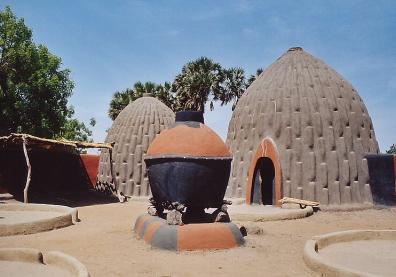Study day "Sahelian studies without blinkers: critical and multidisciplinary perspectives".

The Sahel, referred to as the "arc of crisis" in the French Republic's 2008 White Paper (Foucher, 2012), is a region whose complexity tends to elude the term "crisis", which, precisely, according to Morin (2012) "instead of awakening, contributes to lulling to sleep". Indeed, applied to all aspects of life (political, economic, religious, migratory, food and demographic crises), media and political discourse, as well as scientific research and, consequently, representations of the Sahel, are today polarized around crises, a polarization that inevitably obscures the realities on the ground. For example, when we look at the theses being defended on the Sahel issue in 2023 in France[1], with a few exceptions, they concern economic, political and environmental sciences, with crisis as the predominant theme. Thus, we are witnessing a kind of amplification, by political, media and scientific players, of the pensée unique.
For Bonnecase and Brachet (2013), this paradigm is linked to the context of inaccessibility of the field decreed by many scientific and diplomatic institutions, the result being an "increasing production of expert reports based on distant viewpoints on the Sahel, and a rarefaction of work based on an empirical foundation". Yet, as these two authors point out, "even the most obvious manifestations of crisis cannot be understood in their complexity if they are apprehended in isolation, as if they made sense in themselves or marked a clear break necessarily in relation to their ordinary, social and historical environment". Hence the need not only for a plurality of places of enunciation, which, in decolonial and postcolonial terms, correspond to the places from which knowledge is produced, but also for a diversity of disciplinary approaches.
For example, Lefebvre (2015) has demonstrated by studying scarification practices in the central Sahel in the 19th century that, contrary to colonial discourses in which these practices appear as fixed and immutable usages by which one would always, and in the same way, have figured the ethnicity on the skin, scarifications are in reality the reflection of life courses inscribed in processes of individual identification.
Without excluding the above-mentioned mainstream disciplines, which are essential to a deep understanding of the Sahel, what critical and complementary perspectives do disciplines such as anthropology, history and linguistics offer to balance the dominant discourse? What alternative discourses can help us move away from univocal and often reductive readings? And what is the role of digital humanities (notably humanities and social science research data platforms such as HAL, LaCAS, Isidore, etc.) in the management, interpretation and reinterpretation of data on the Sahel? These questions, which are not exhaustive, will be the focus of this day devoted to Sahelian studies.
Bibliographical references
Bonnecase, V., Brachet, J. 2013. "Sahelian crises" between local perceptions and international management. Politique africaine, 130, 5-22.
Foucher, M. 2012. L'Arc de crise, approche française des conflits (The arc of crisis, a French approach to conflicts). Bulletin de l'Association de géographes français, 89e année, Risques et conflits. pp. 6-17.
Lefebvre, C. 2015. Ganin ya fi ji / Voir est mieux qu'entendre: lire l'identité sur la peau (Sahel central, XIXe siècle). Critique internationale, 68, 39-59.
Morin, E. 2012. For a crisology. Communications, 91, 135-152.
ORGANIZATION
Liliane Hodieb, Inalco-PLIDAM-LACAS
SCIENTIFIC COMMITTEE
Sandra Bornand, CNRS-LLACAN
Peter Stockinger, Inalco-PLIDAM
Cécile Van Den Avenne, EHESS-IMAF
.